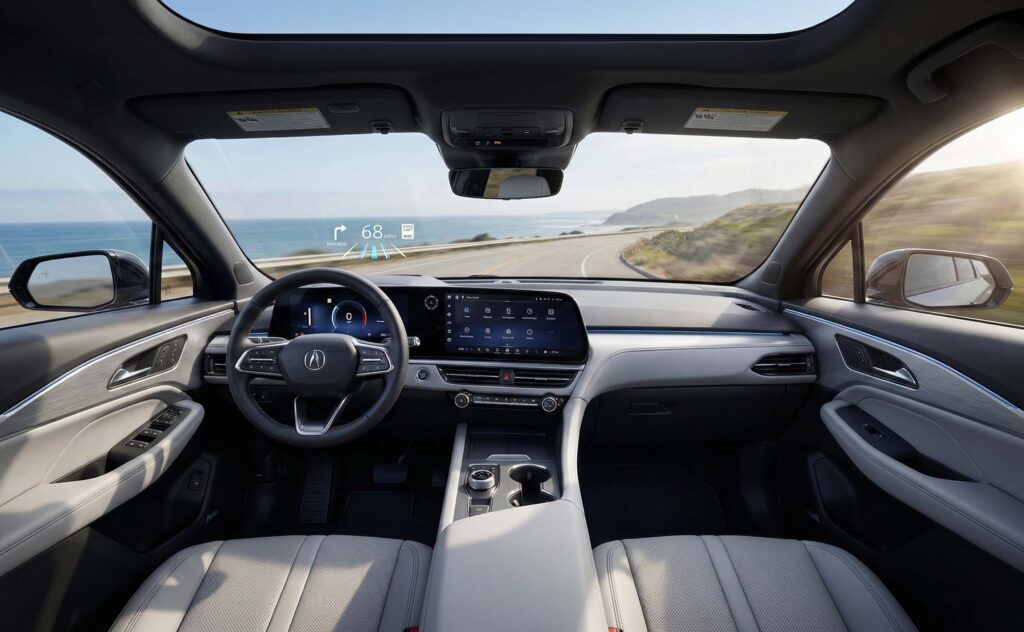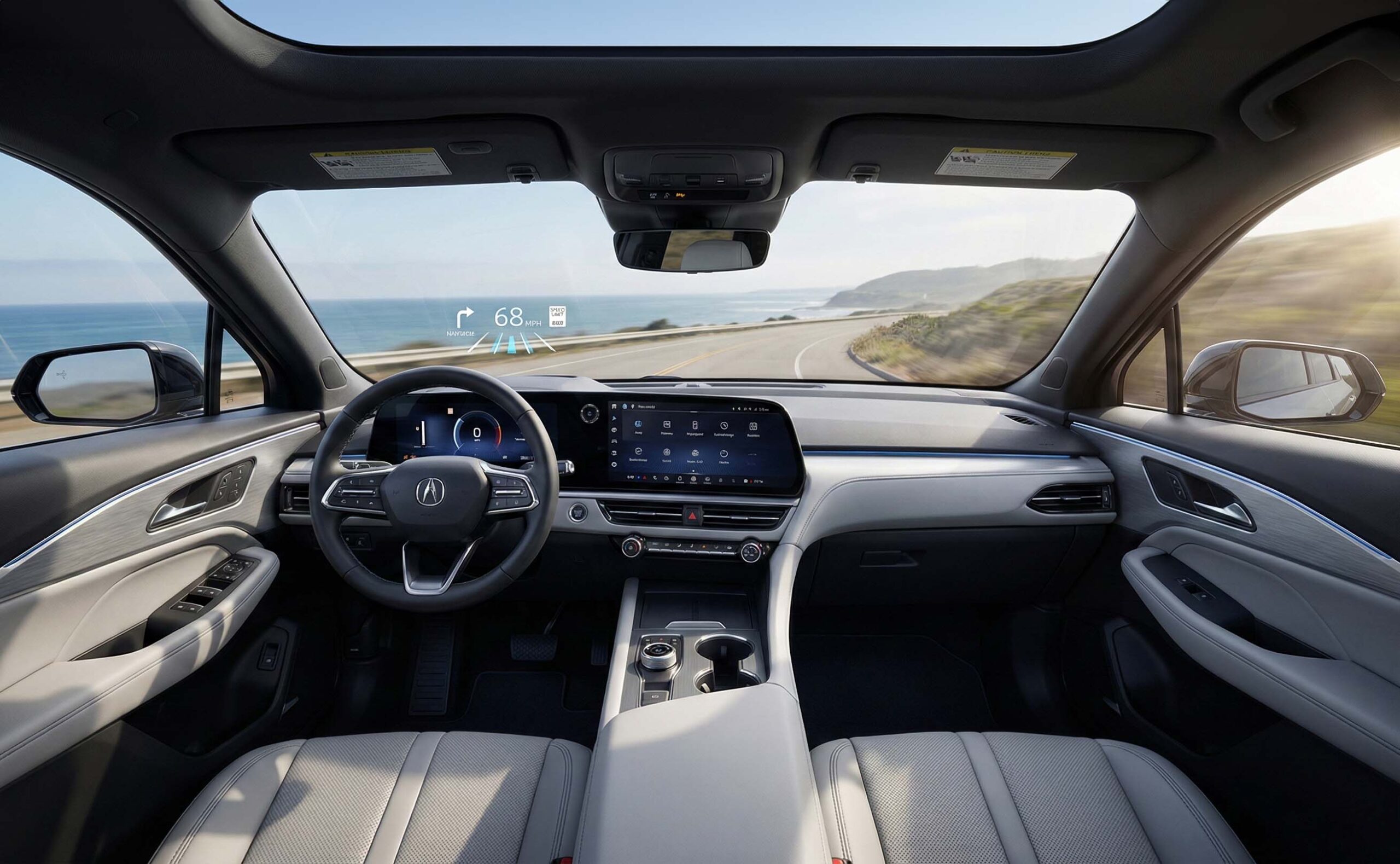Head up displays were once a luxury found only in high end vehicles. Today they appear in a growing number of cars, trucks, and SUVs. HUD systems project important driving information onto the lower section of the windshield so the driver can keep their eyes on the road. While this feature improves safety and convenience, it also changes the way windshield replacement must be handled.
If your vehicle has a head up display, you cannot treat windshield work the same way you would with a standard piece of auto glass. The glass itself is different, the installation requirements are more precise, and the cost of replacement is usually higher. Below is a clear breakdown of why HUD technology affects your windshield choices and what you should know before scheduling service.
What Makes a HUD Windshield Different
A windshield designed for a head up display is not the same as a standard replacement windshield. Even though it looks similar from the outside, it contains specialized elements that allow clear and accurate projection.
1. Optical grade glass
HUD compatible windshields use optical grade glass that has tighter manufacturing tolerances. This ensures that the projected image is sharp, properly positioned, and free from double images or distortion.
2. A special reflective PVB layer
Between the layers of glass is a precisely engineered polyvinyl butyral interlayer. This reflective layer is designed to catch the projector beam and display it at the correct angle. Standard windshields do not have this feature, which means HUD projections would appear blurry or doubled.
3. Thicker lamination in the projection area
Some windshields include reinforced or adjusted lamination where the HUD is projected. This helps stabilize the image and ensures consistent visibility in various lighting conditions.
4. Tight optical calibration requirements
Because the glass plays a direct role in how the HUD appears, HUD windshields must meet strict optical standards. Even a slight variation in thickness or curvature can interfere with the clarity and alignment of the projection.
How HUD Technology Affects Windshield Replacement Options
Once you understand how specialized the glass is, it becomes clear that your replacement options are more limited. Here is what to expect.
1. You must replace with a HUD compatible windshield
You cannot install a standard windshield on a vehicle that has a factory HUD. The projection will not work correctly and may be completely unusable. Most vehicles with HUD technology require a specific OEM windshield or a high quality aftermarket equivalent built to the same optical standards.
2. Fewer manufacturers offer HUD versions
Not all glass manufacturers produce HUD compatible windshields. This means your options are narrower and your shop may need to order the part instead of installing one from general stock.
3. You may need a high precision installation
HUD systems depend on exact positioning. If the windshield is not installed at the correct angle or if the adhesive cure time is rushed, the projected image could appear misaligned. Many technicians use lasers or digital measurement tools to ensure proper placement.
4. Recalibration may be required
Many vehicles that have a HUD also have other advanced driver assistance systems like forward collision alert or lane keeping cameras. These sensors often require recalibration after windshield replacement. Even if your HUD itself does not require calibration, the related ADAS features probably do.
How HUD Features Affect Windshield Replacement Costs
HUD equipped windshields are almost always more expensive than standard windshields. Here are the main reasons why.
1. Specialized glass is more costly to manufacture
The optical grade materials, reflective PVB layers, and precise tolerances increase production costs. This pushes both OEM and aftermarket HUD windshields into a higher price category.
2. Fewer suppliers means higher part prices
Limited manufacturing and availability often lead to higher retail prices. In some cases, the part may need to be ordered directly from the dealer.
3. Additional installation labor
Because HUD windshields require careful placement and strict curing conditions, the installation time may be longer or the shop may require a more experienced technician.
4. Required ADAS recalibration
If your vehicle has cameras or sensors connected to the windshield, you will need recalibration after the install. Recalibration adds to the total cost and is mandatory for proper system performance.
5. Insurance may cover the difference
If you carry comprehensive coverage, your insurance provider will typically cover the cost of a HUD compatible windshield minus your deductible. Some policies offer full glass coverage, which could reduce your out of pocket expenses entirely.
Signs You Need a HUD Compatible Replacement
Here are situations where a HUD specific windshield is required:
- Your vehicle displays speed or navigation information on the windshield
- You see a projector unit on the dashboard below the windshield
- Your owner manual lists head up display features
- Your current windshield has a marked HUD area near the lower center
- Your replacement shop asks for your VIN to check glass compatibility
If you are unsure, a reputable shop can quickly verify your part number using your VIN.
Choosing a Reliable Auto Glass Shop for a HUD Equipped Vehicle
Because HUD systems demand precise optical alignment and correct calibration, choosing the right glass shop matters. Look for:
- Technicians who have HUD and ADAS specific training
- Shops that use OEM or certified equivalent HUD compatible glass
- Proper calibration equipment
- Clean installation environments
- Clear warranty terms for both glass and workmanship
Avoid shops that cannot confirm the exact part number or that offer unusually low prices. Cutting corners on a HUD windshield can result in blurry displays, misalignment, or sensor malfunctions.
Final Thoughts
Head up displays make driving safer by keeping your eyes on the road. However, they also add extra complexity when it comes to windshield replacement. With specialized glass, fewer manufacturing options, and precise installation needs, you should work with a reputable service provider that understands HUD technology.
Choosing the correct windshield ensures that both your projection system and your safety features continue to work exactly as designed. With the right shop and the right glass, you will keep your HUD clear and functional for years to come.
Use Our Free Quote Tool to Compare Trusted Shops
If your vehicle has a HUD equipped windshield, choosing the right shop is especially important. Glass.net makes the process simple. Use our free quote tool to instantly compare up to three trusted auto glass shops in your area. You will see real pricing, availability, and service options so you can pick a shop that understands HUD technology and installs the correct glass for your vehicle. This helps you save time, avoid guesswork, and get high quality service from certified professionals.

To read more, visit blog.glass.net

